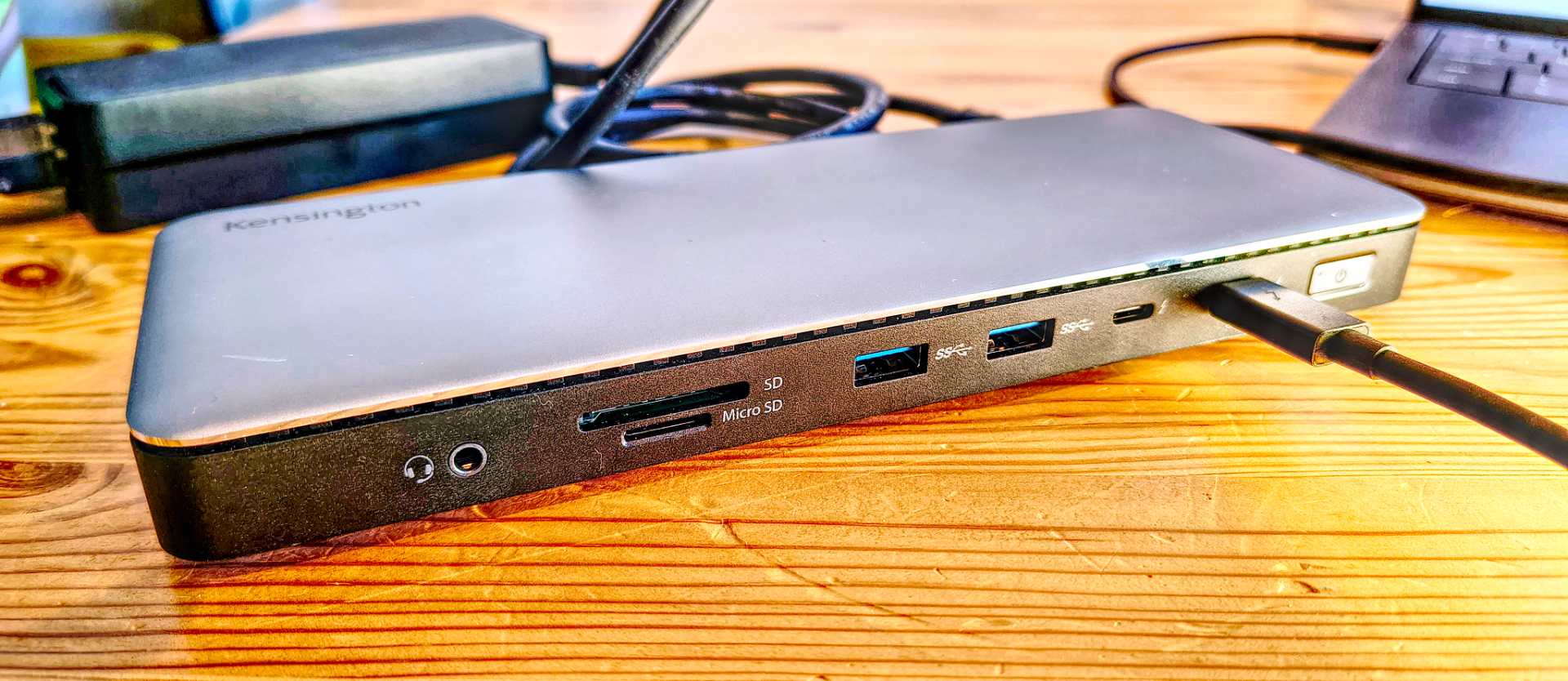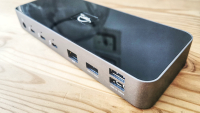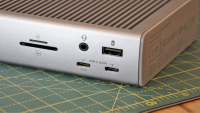TechRadar Verdict
This is a great dock, but how can it cost almost as much as the TB5 hardware from the same source? As nice as the SD5768T is, it isn’t worth this much, especially given its underspecified power supply. Cheaper docks with better specs are available.
Pros
- +
Elegant and robust
- +
Wide port selection
- +
96W charging
Cons
- -
Expensive for a TB4 dock
- -
Only 1GbE LAN port
- -
PSU isn’t big enough
Why you can trust TechRadar
Kensington SD5768T EQ: 30-second review
Since I reviewed it recently, the Kensington SD5768T EQ Thunderbolt 4 Docking Station is comparable to the SD5000T5 EQ Thunderbolt 5 dock, which sells for nearly the same price.
Where the SD5000T5 is more of a hub with no HDMI or DisplayPort out, the Kensington SD5768T is a fully featured Thunderbolt 4 dock with thirteen ports. These include a Thunderbolt downlink, HDMI, 6 USB ports, dual card readers, audio and LAN ports.
It also has a wide compatibility range, working with Thunderbolt 3 and 4, USB4 and USB-C, enabling it to work with almost any laptop with a USB-C port of whatever specification.
Typically, Kensington uses an elegant metal and plastic construction to provide a device that should last the three years of warranty on offer and then some.
The only caveats to this design are that it takes up a significant slice of desk space and the asking price is decidedly on the steep side. If you want a no-nonsense design supporting two monitors, this might be worth considering, but better deals are available.
Not a candidate for the best laptop docking stations , but not terrible either.
(Note from the editor: The SD5768T incorporates Thunderbolt Share technology so that two Thunderbolt-enabled devices can be connected together for sharing of peripherals and fast data transfer speeds without either of the computers needing to be Thunderbolt Share-enabled. That functionality may impact his opinion regarding the pricing of the device. This explains its price premium.)
Kensington SD5000T5 EQ: Price and availability
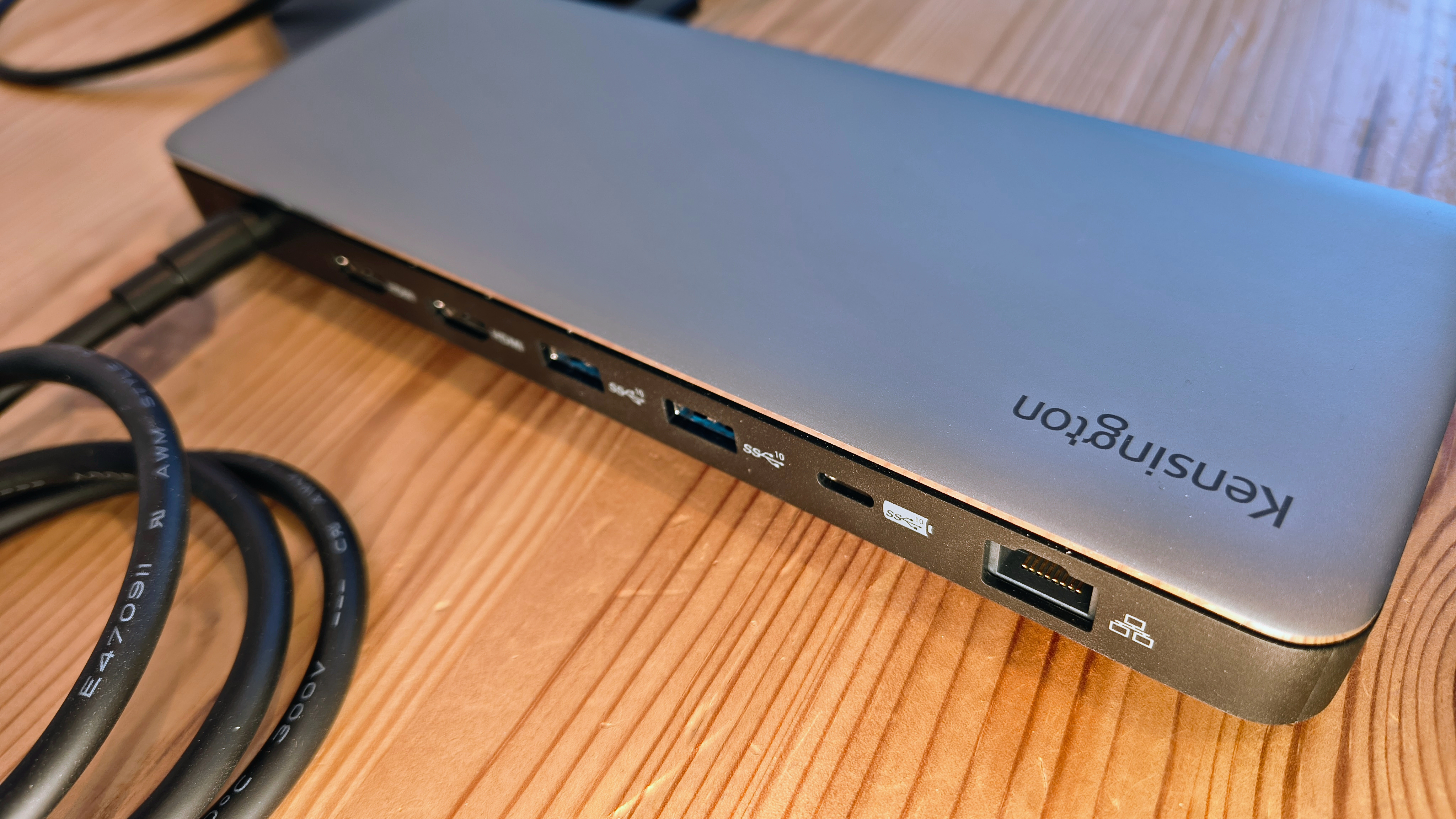
- How much does it cost? $270/£290/€300
- When is it out? It is starting to be available now
- Where can you get it? Direct from Kensington or from an online retailer
Depending on region, the Kensington SD5768T EQ Thunderbolt 4 Docking Station can either be bought directly from the maker or via an online retailer.
For those in the US, directly sourcing this dock from Kensington will cost you $299.99, but finding it on Amazon.com will save you another $30.
In Europe, the asking price is roughly €300 via Amazon, with the exception being the UK, which doesn’t have it on Amazon. Luckily, it can be found competitively at the best price at the online retailer Currys for £290.
What’s a little disconcerting about these prices is that the cost isn’t far from that of the Thunderbolt 5 SD5000T5, a much higher specification device.
Compared to competitors’ devices, the price differential can be stark, with the SD5768T costing substantially more than the majority of alternatives.
OWC offers an 11-port Thunderbolt 4 dock for only $229.99, CalDigit the Elements Hub for $179.99, and Ugreen Revodok Max 208 for only $249.99.
More expensive are the Ugreen Revodok Max 213 Thunderbolt 13-in-1 Docking Station at $299, the classic CalDigit TS4 at $350 and the Plugable Thunderbolt 4 dock (TBT-6950PD) for $299.95. But all these are higher spec devices with more Thunderbolt downlink ports, 2.5GbE LAN ports and much greater charging power levels.
In short, if you want a basic Thunderbolt 4 dock, it can be bought for much less than this, depending on how many ports you need and charging requirements.
- Value: 3 / 5
Kensington SD5768T EQ: Specs
Compatibility | TB4, TB3, USB4 and USB-C |
Number of Ports | 13 |
Ports | 1x TB4 upstream 96W PD, 1x TB4 downstream, 2x USB 3.2 Gen 2 Type-A, 2x USB 3.2 Gen 1 Type-A, 1x USB 3.2 Gen 2 Type-C, 1x Combo Microphone & Headphone Port (front), 1x 1GbE RJ45 Ethernet port, 2x HDMI, 1x SD 4.0 Card reader,1x MicroSD 4.0 Card reader |
Downstream power | 1x 15W TB4 DFP, 1x 7.5W USB-C, 4x 4.5W USB-A |
Upstream power | 96W Thunderbolt |
Size | 225 x 85 x 22mm (W x D x H) |
Weight | ?395g |
Accessories | PSU Adapter 134.4W 21V 6.4A, 50cm Thunderbolt 4 cable |
Kensington SD5768T EQ: Design
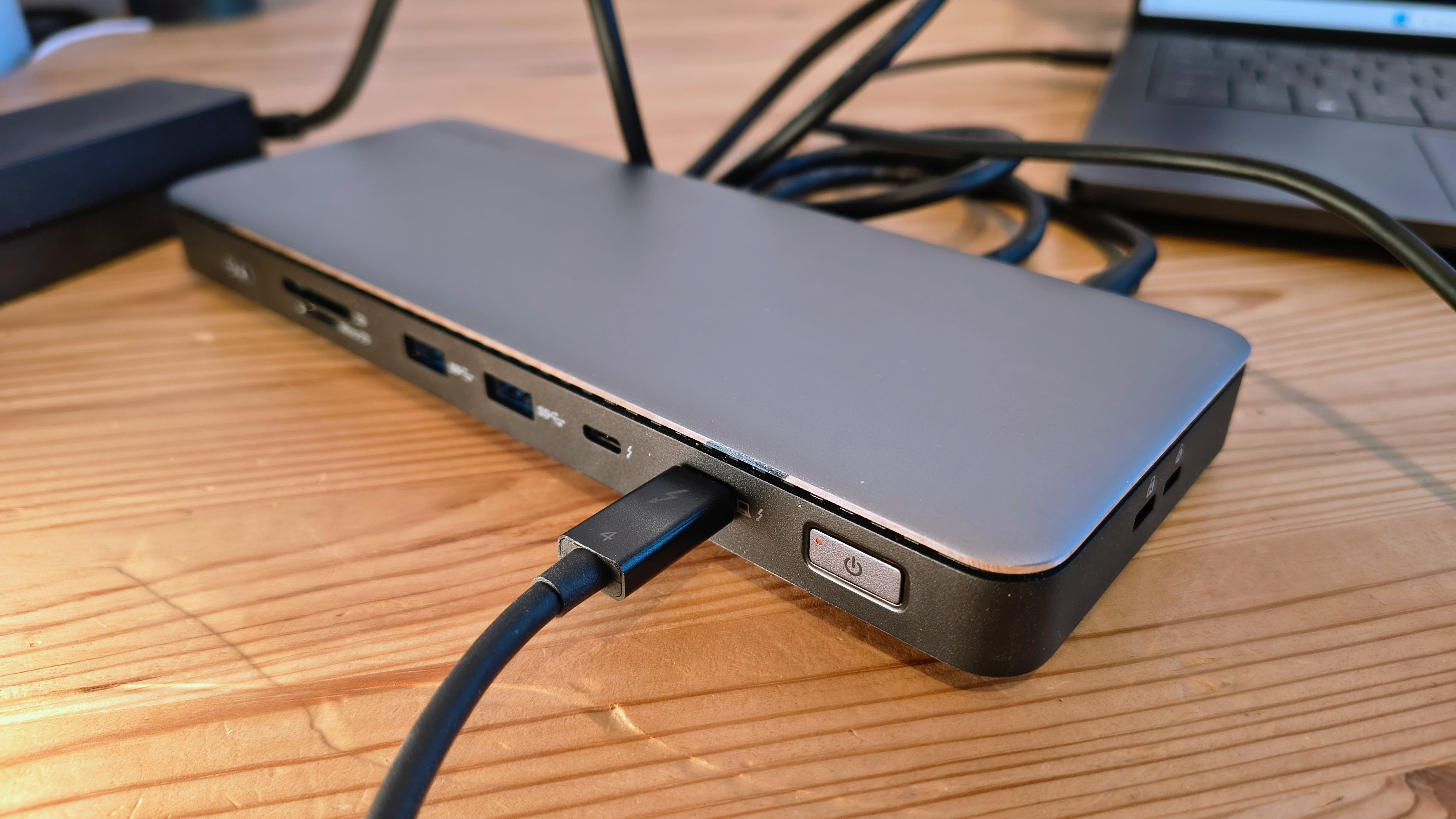
- Elegant aesthetics
- Poor port placement
- Only 1GbE LAN port
The construction quality of Kensington hardware is usually excellent, and the SD5768T maintains those standards with an elegant form. While most of its structure is plastic, the aluminium cover with the logo etched on it lends a certain gravitas.
It might cause an issue for those who don’t have much desk space, as it’s 22.5cm long, and the number of cables around it could be significant.
Unlike some other options, this dock can’t be mounted vertically, although it has threaded holes on the underside, hinting that these can be used to attach a monitor using the K34050 mount, sold separately. Accessibility when on the back of a monitor would be abysmal if you plug drives into the dock under those circumstances.
It didn’t take long to look at the SD5768T to establish that the designers have never used a dock because the port placement on this model is shockingly bad.
The only substantial thing wrong with the Kensington’s SD5000T5 was the rear placement of the power button, which isn’t repeated here. But some other choices made on the SD5768T make zero sense whatsoever.
On the front, travelling left to right, is the audio jack, SD card reader (both standards), two USB-A ports, the only Thunderbolt 4 downlink, the Thunderbolt uplink and the power button.
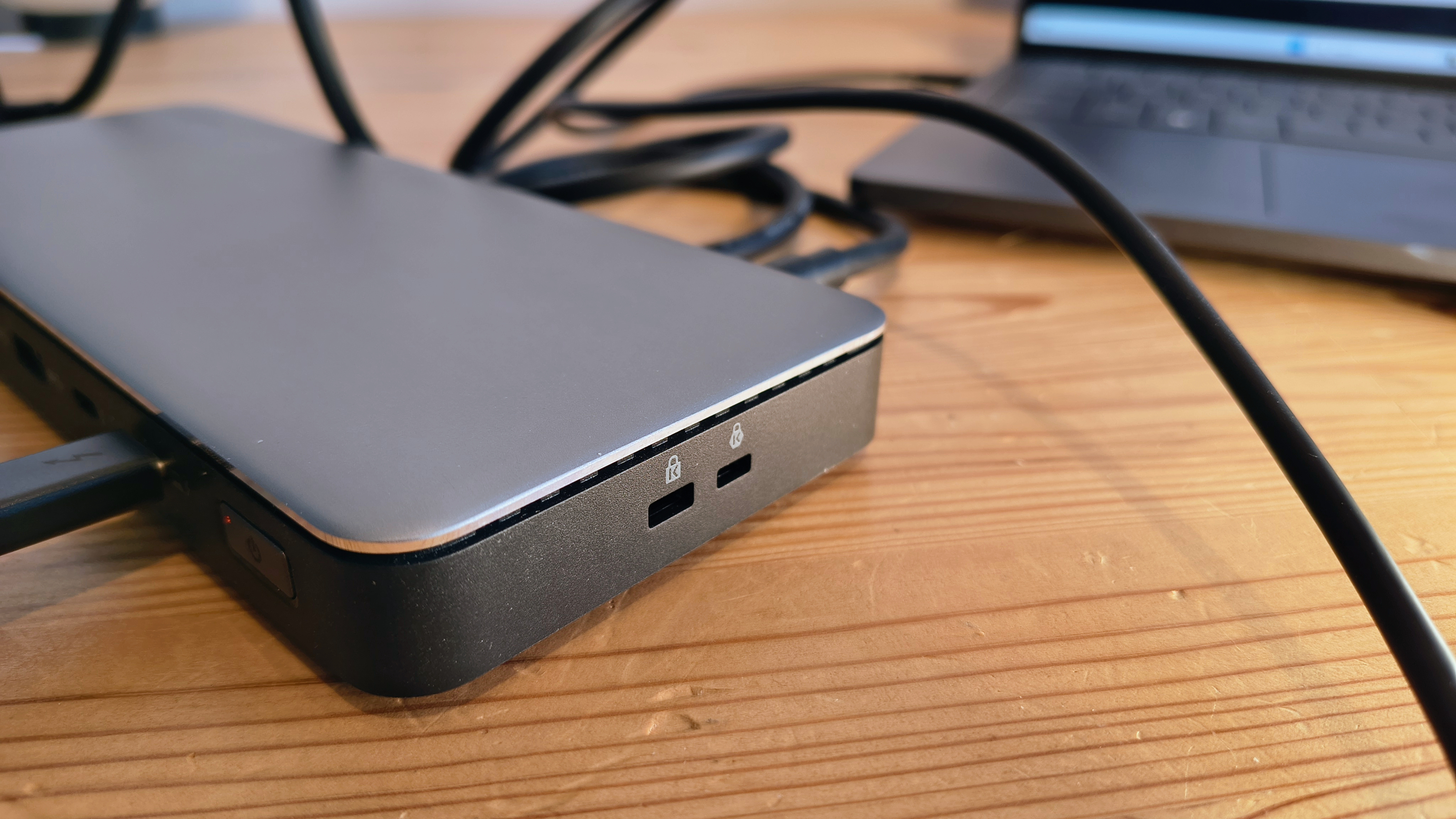
That seems fine until you realise that the USB-A ports are Gen 1, and the Gen 2 ports are on the back, which is inconvenient for external SSDs. And, if you intend to use a Thunderbolt monitor, the front-facing port isn’t a great option either.
What might have made more sense was swapping the USB-C Gen 2 port on the back, the one made for phone charging, with the Thunderbolt downlink.
The rear has dual HDMI ports, dual USB-A Gen 2 ports, the aforementioned USB-C Gen 2 port and an Ethernet port.
The LAN port’s only 1GbE spec was a shock since even the cheaper dock makers are using 2.5GbE LAN ports these days. You could repurpose the single TB downlink for 10GbE/5GbE/2.5GbE with an adapter, but with only one, that might seem extravagant.
- Design: 2.5 / 5
Kensington SD5768T EQ: Features
- Bandwidth management
- Dual display only
- Power management
Not a special problem to Kensington, but common to this dock is the ability to deliver a device that can’t support all the ports it has to its full specifications.
Sharing out the maximum 40Gbps that Thunderbolt 4 and USB4 enable between these ports was always going to be a challenge, especially when it has two HDMI ports and a 20Gbps TB downlink, ignoring all the USB, card reader and LAN port.
Because the LAN port here is only 1GbE, it enables slightly more bandwidth to do around, but some significant limitations to the monitor connections need to be documented.
Therefore, if you use either of the HDMI ports, you’ve cut the bandwidth needed for everything else in half. Under Thunderbolt 3 and 4, on both Mac and PC, the best display options are dual monitors connected by HDMI, delivering 4K at 60Hz. High resolutions of 8K on the PC and 6K on the Mac are available via the Thunderbolt port, but only to a single screen. One display is also the most a MacBook M1/M2 or iPad Pro offers, and a Windows PC using the USB-C Alt Mode.
It is possible to drop the resolution to 1080p and get dual displays at 240Hz for those wishing to game on PC and Mac. However, some more exotic modes, like 8K at 60Hz and 4K at 120Hz on a Thunderbolt-connected PC, require support for Display Stream Compression (DSC) on the host device and monitor.
I advise connecting directly to a monitor using an HDMI port if you have one on your laptop. It might mean connecting two cables and not one, but the dock will have more bandwidth for whatever else you connect to it.
But it’s not only bandwidth that needs to be shared on this dock; power is also something in controlled supply.
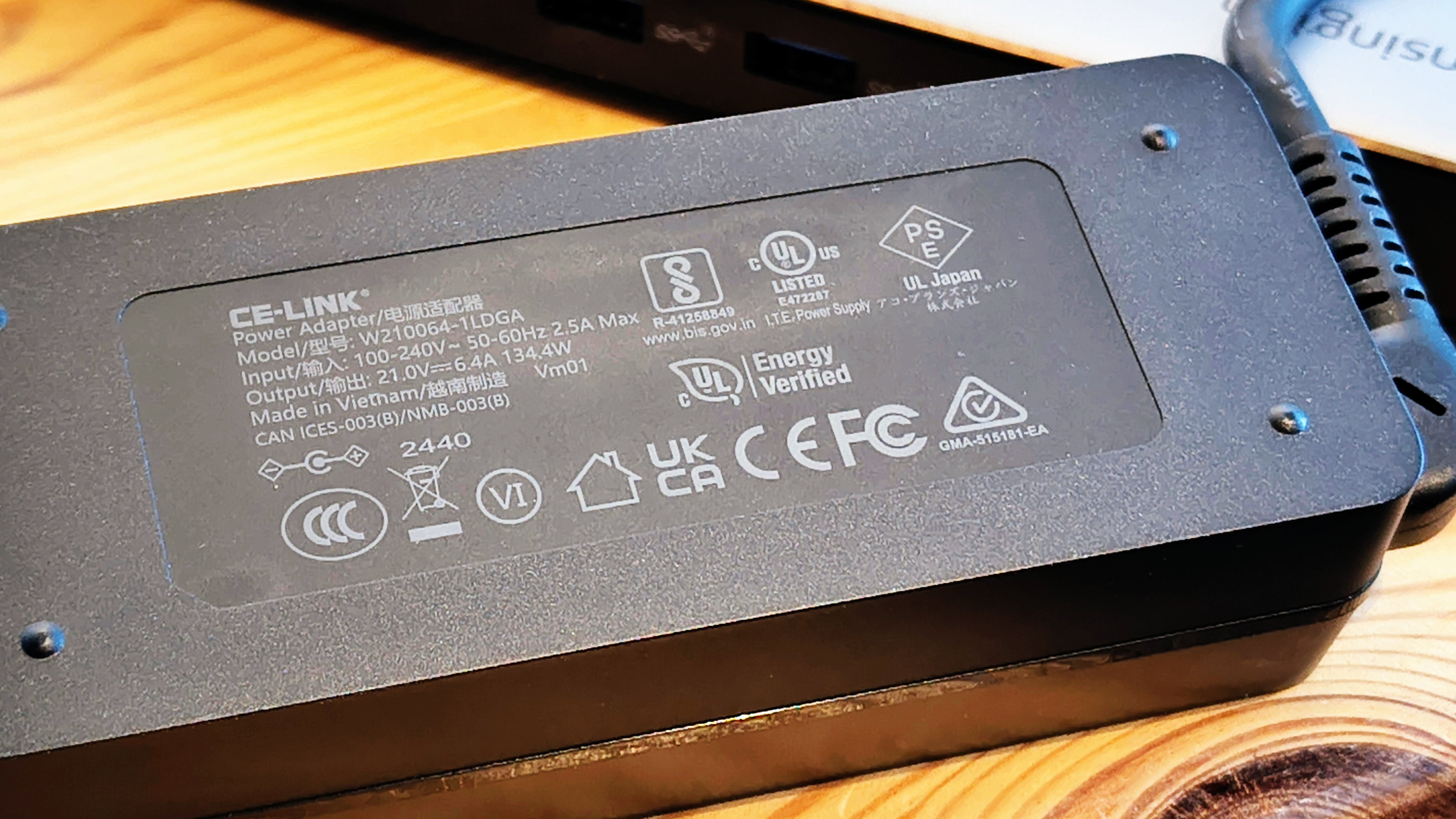
According to Kensington, “Supports up to 96W of Power Delivery and automatically adjusts for optimal performance”. What that means realistically is that the PSU that comes with this dock has a maximum power output of only 134.4W, and once the dock has enough power to run, there is probably 96W that can be supplied over the Thunderbolt uplink to a laptop connected. But that assumes you don’t connect anything else.
Each of the USB-A Gen 1 ports is rated to 5V/0.9A (4.5W each), and the USB-A Gen 2 ports are the same, taking another 9W. The single USB-C Gen 2 port is 7.5W for phone charging, and the single TB4 DFP downlink is 15W. Add all those up, and that’s 40.5W, which, when added to the 96W, makes 136.5W, more than this PSU can deliver without considering the power needed to run the dock.
The only possible conclusion is that each device you add to the SD5768T will take power away from the 96W that is allocated to the charging uplink, otherwise the PSU would not be able to handle the power demands.
This isn’t an uncommon situation, and most docks can’t power everything that’s attached, but for those that need 96W for charging a mobile workstation or gaming laptop, it’s worth noting that the PSU on this dock is only rated to provide that much power in certain circumstances.
- Features: 3 / 5
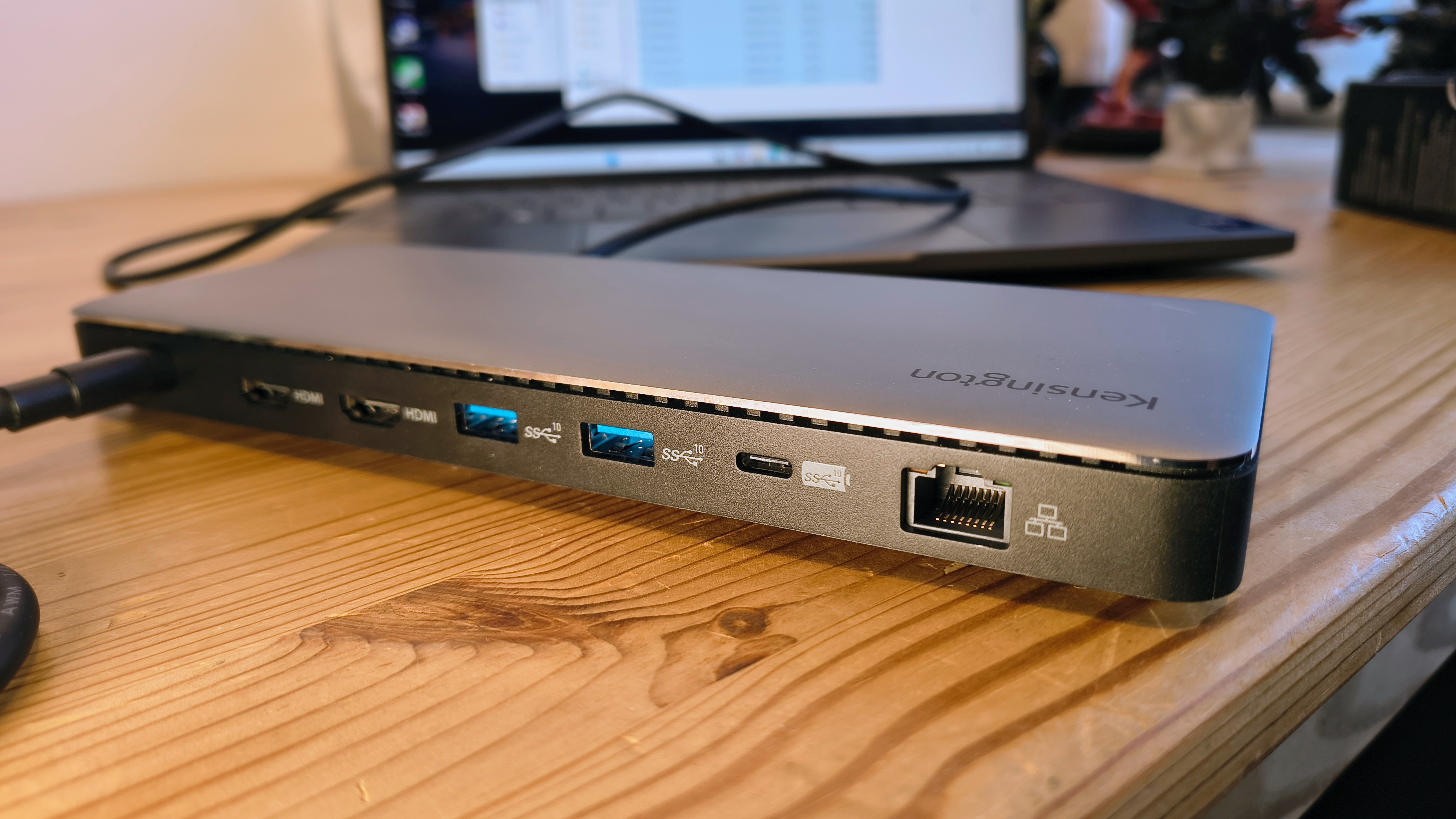
Kensington SD5768T EQ: Performance
- Good USB4 compatibility
I have no complaints about this dock’s functionality regarding Thunderbolt and USB4 connectivity, which is a dramatic difference from the Thunderbolt 5 docks I’ve tried.
Using both Thunderbolt and USB4 external drives, the maximum speeds of those devices were achieved on both Thunderbolt and USB4 downlinks.
The Thunderbolt 4 connection was from an Intel Core Ultra Mini PC, and the USB4 port came from an AMD Ryzen Mini PC, and these both worked wonderfully. I also tried the dock with a Dell Pro 14 Premium laptop with Thunderbolt 4, and connectivity was equally flawless.
For example, when the Corsair EX400U USB4 SSD was attached and CrystalDiskMark 8.05 was run, read speeds of 3166MB/s and write speeds of 3003MB/s were possible.
The speed is excellent for Thunderbolt or USB4 peripherals, but there is only a single downlink port for this purpose.
- Performance: 4.5 / 5
Kensington SD5768T EQ: Final verdict
Depending on how many of the ports you might typically use on a dock, the SD5768T is either highly usable or distinctly borderline.
All docks tend to play fast and loose with the amount of bandwidth at their disposal, but more of an issue on this dock is how power is shared. For those wanting the full 96W charging experience for a demanding laptop, some compromises might need to be made regarding what else you hang off the dock.
The other issue is the price, which seems to be at least $50 more than the hardware can comfortably justify. If this was a little cheaper and not so close in price to the TB5 SD5000T5, then some of the other idiosyncrasies might be easier to overlook.
I’m also not a fan of the port placements, which ended up with the phone charging port on the back and the TB downlink on the front.
For this asking price, getting the ports on the appropriate side of the dock seems a minimum requirement that Kensington failed to achieve.
Kensington SD5768T EQ: Report card
Value | Expensive for a TB4 dock | 3 / 5 |
Design | Ports in the wrong places | 2.5 / 5 |
Features | PSU is too small for all the ports | 3 / 5 |
Performance | Works flawlessly with TB4 and USB4 | 4.5 / 5 |
Overall | An expensive dock with power limitations | 3.5 / 5 |
Should you buy a Kensington SD5768T EQ?
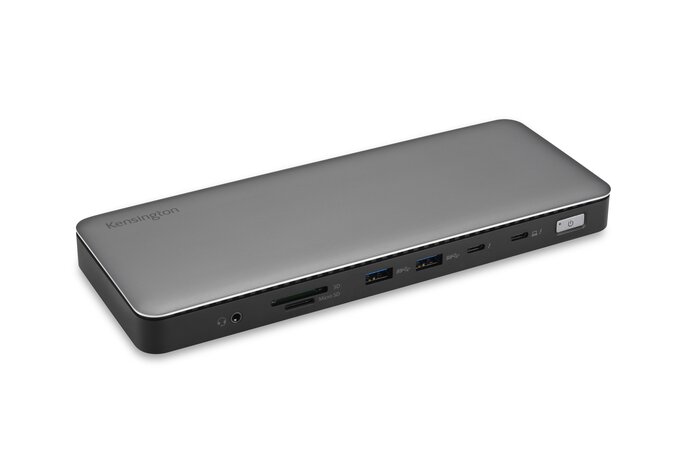
Buy it if...
You have Thunderbolt 4 or USB4
Some docks have issues with USB4, even from Kensington, but this one works well with Thunderbolt and USB4.
You need 96W charging
While there are issues getting the full 96W from this dock if other things are attached, with only a laptop connected, it can charge at 96W. That’s enough to charge most laptops while they’re being used.
Don't buy it if...
You connect lots to a dock
With oversubscription on bandwidth and power, this dock isn’t ideal for those who load up their docks or hubs with all manner of peripherals. The answer is a Thunderbolt 5 dock, assuming you have the port needed to drive one of those.
You are working to a budget
The cost of this dock is high compared to some brands, and a similar specification can be found for much less.
Also consider
OWC Thunderbolt Dock
Another cheaper but still high-quality dock from OWC, this design has eleven ports and offers 90W charging for a Thunderbolt-connected laptop. What it lacks is a dedicated monitor port, but adapters for HDMI or Display port from Thunderbolt are available.
Check out our OWC Thunderbolt Dock review
CalDigit Thunderbolt Station 4
The CalDigit Thunderbolt Station 4, or TS4 as it is also known, is a full-featured Thunderbolt dock that works with Thunderbolt 4/3 and USB-C.
It is not designed to be a portable dock but specifically to support a laptop user who comes to the office and wants a single cable connection to the network and a host of peripherals. To that objective, it has no less than 18 ports and can deliver up to 98W for charging a connected system. But, it is expensive.
Check out our CalDigit Thunderbolt Station 4 (TS4) review
Mark is an expert on 3D printers, drones and phones. He also covers storage, including SSDs, NAS drives and portable hard drives. He started writing in 1986 and has contributed to MicroMart, PC Format, 3D World, among others.
You must confirm your public display name before commenting
Please logout and then login again, you will then be prompted to enter your display name.
